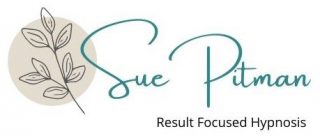Hypnosis can make people see what they believe, producing changes in the brain that suggest the effects are real, according to a study presented to the world’s largest general science meeting yesterday.
About two thirds of the population can be hypnotised and 10 per cent, mostly children, are easily hypnotised. Common medical applications of hypnosis include the treatment of pain, anxiety and phobias.
In a study of eight subjects who were hypnotised, the changes to the part of the brain that processes colour were studied as the individuals were shown black and white or colour pictures.
When subjects who were looking at a black and white image said they were seeing colour there were increases in blood flow to the area of the brain that processes colour vision. When they saw black and white, though they were looking at a colour image, there was a decrease.
“Believing was seeing,” said Prof David Spiegel of Stanford University School of Medicine. “When they believe that they were looking at colour, the part of the brain that processes colour showed increases in blood flow.
“This is scientific evidence that something unusual is happening in the brain, that does not happen ordinarily, when people are hypnotised.
“There has been a whole school of argument that hypnosis is nothing more than an exaggerated form of social compliance. This is evidence that they are not just telling you what they think you want to hear. They are actually perceiving things differently. That is a very important lesson.”
Prof Spiegel studied the effects of hypnosis on colour vision with Prof Stephen Kosslyn of Harvard University. Now they plan a new study to follow up work by Prof Spiegel, published in The Lancet, which showed that subjects who were hypnotised during painful procedures could reduce the dose of pain relief required.
Another trial on the use of hypnotism to prevent pain involves children aged six to 12 with a suspected kidney disorder which can only be investigated by inserting a catheter into the bladder without anaesthetic.
Under hypnosis, the children imagine they are inside Disney Land. “There is less crying, less pain as they are inserting the catheter, and the procedure takes 20 minutes less, which for a kid is a big difference,” said Prof Spiegel.
Original link: http://www.telegraph.co.uk/connected/main.jhtml?xml=/connected/2002/02/19/ecnaa119.xml



